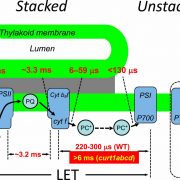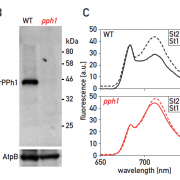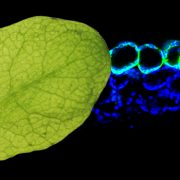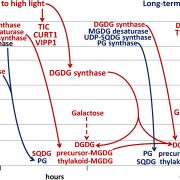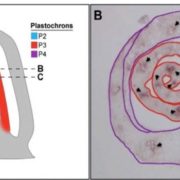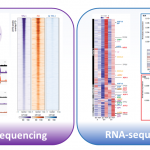The structure of a triple complex of plant photosystem I with ferredoxin and plastocyanin (Nature Plants)
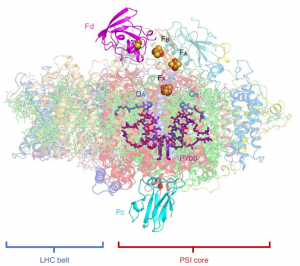 Photosystem I (PSI) is a membrane-bound protein complex that plays a central role in the conversion of solar energy to chemical energy to drive assimilate production. Photosystem I is an enzyme complex that transfers electrons from plastocyanin (Pc) to ferredoxin (Fd). Here Caspy et al. have characterized a high-resolution ultrastructure of the entire complex, PSI associated with Pc and Fd. The authors added purified Pc and Fd to pure Pisum sativum PSI crystals obtained previously. They used cryo-EM to arrive at a high-resolution structure with all the details of binding sites and interactions within it. The study established that the transient binding of Fd to PSI is essential for its quick reduction by PSI to enable a high turnover of the reaction. In the PSI–plastocyanin binding site, the reduced electron carriers are in the lumen side of the PSI and transfer is mediated by cytochrome c6 and plastocyanin. It was found that Fd relies on electrostatic interactions from binding proteins PsaA, PsaC and PsaE whereas plastocyanin depends on hydrophobic interactions with PsaA and PsaB. (Summary by Arun K. Shanker @arunshanker) Nature Plants 10.1038/s41477-020-00779-9
Photosystem I (PSI) is a membrane-bound protein complex that plays a central role in the conversion of solar energy to chemical energy to drive assimilate production. Photosystem I is an enzyme complex that transfers electrons from plastocyanin (Pc) to ferredoxin (Fd). Here Caspy et al. have characterized a high-resolution ultrastructure of the entire complex, PSI associated with Pc and Fd. The authors added purified Pc and Fd to pure Pisum sativum PSI crystals obtained previously. They used cryo-EM to arrive at a high-resolution structure with all the details of binding sites and interactions within it. The study established that the transient binding of Fd to PSI is essential for its quick reduction by PSI to enable a high turnover of the reaction. In the PSI–plastocyanin binding site, the reduced electron carriers are in the lumen side of the PSI and transfer is mediated by cytochrome c6 and plastocyanin. It was found that Fd relies on electrostatic interactions from binding proteins PsaA, PsaC and PsaE whereas plastocyanin depends on hydrophobic interactions with PsaA and PsaB. (Summary by Arun K. Shanker @arunshanker) Nature Plants 10.1038/s41477-020-00779-9


